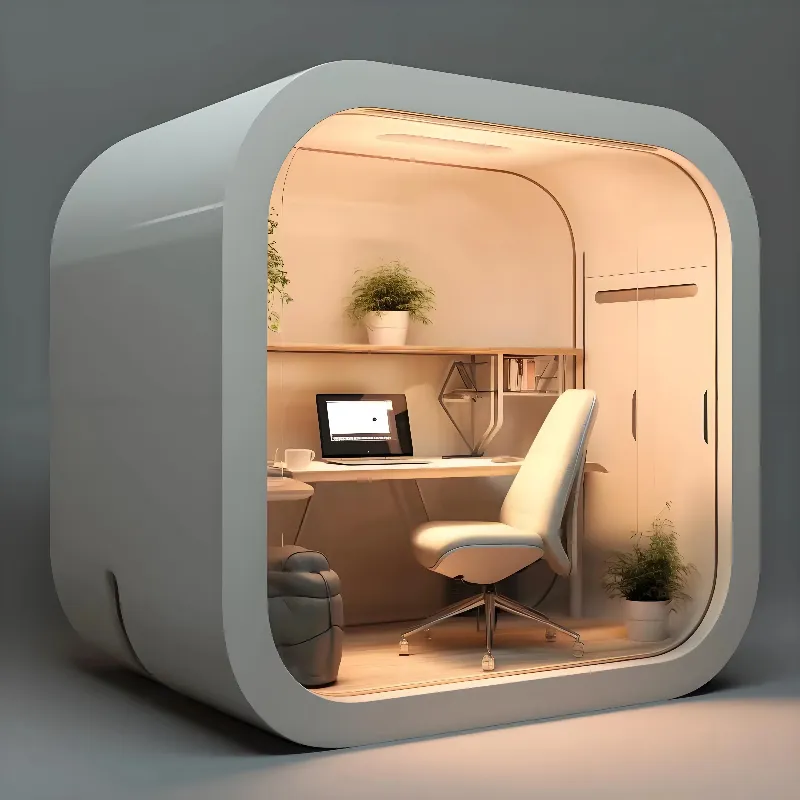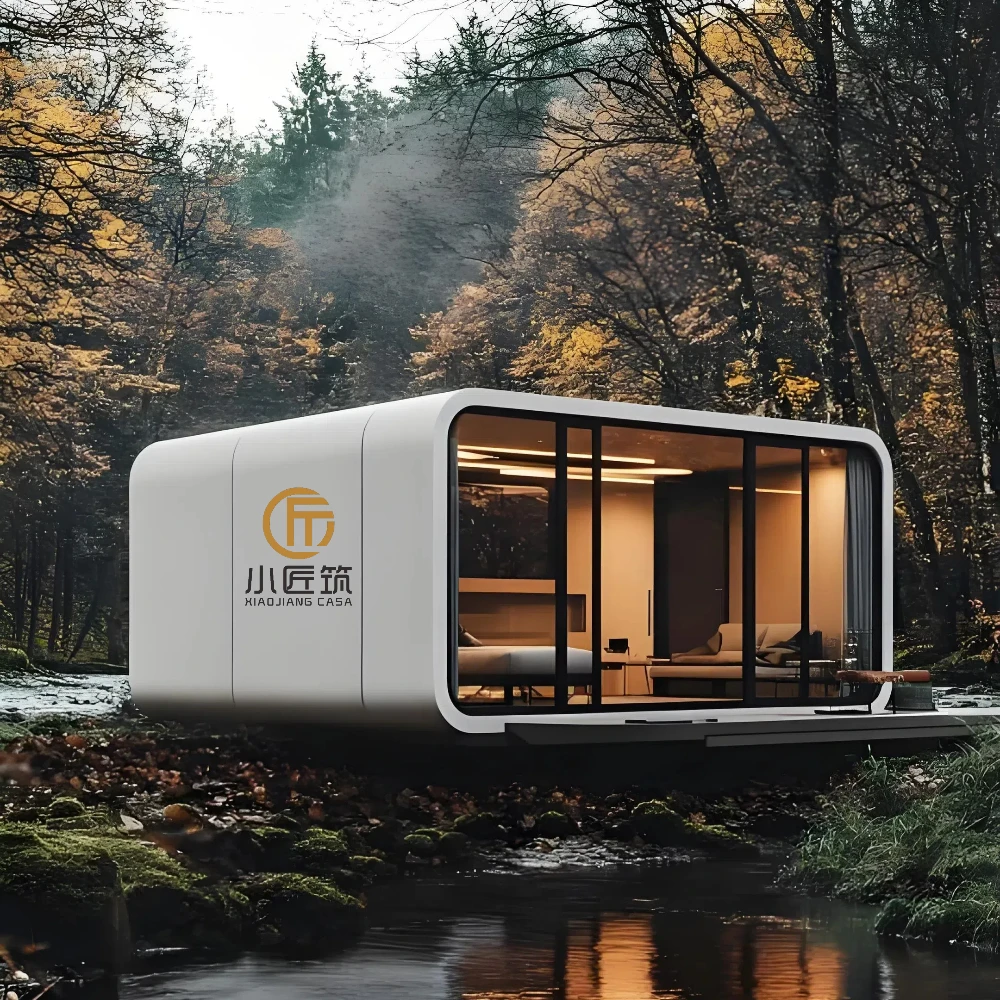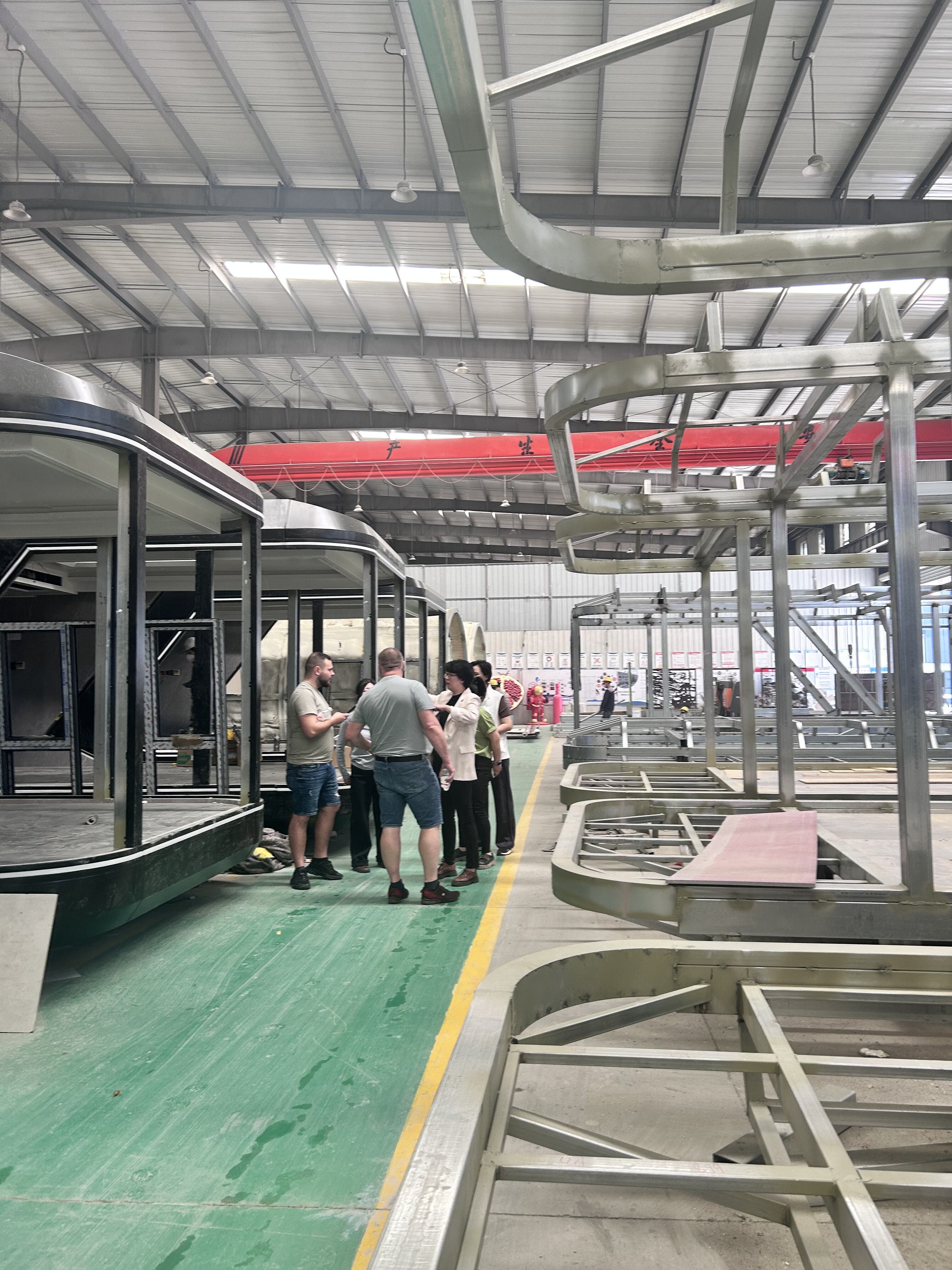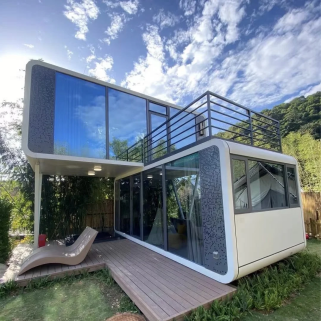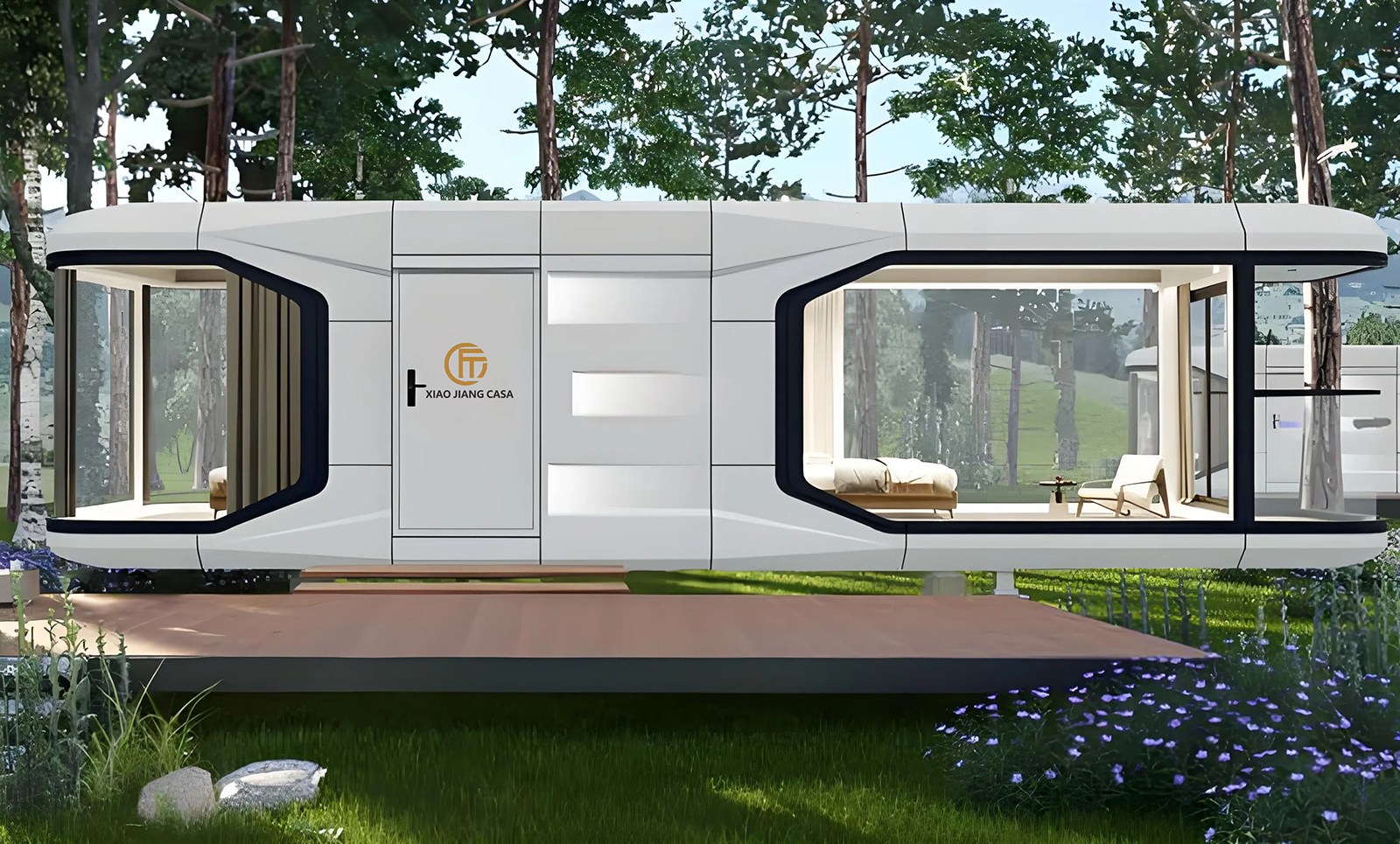Sustainability Benefits of Modular Houses
Design Efficiency and Sustainable Living in Modular Homes
Factory built modular homes actually save a lot on resources because they're constructed in controlled environments rather than on site. According to Modular Building Institute data from 2023, this approach cuts down on material waste somewhere between 30 and 50 percent compared to conventional construction methods. The precision involved in manufacturing these homes means better sealing around doors and windows, plus top quality insulation materials and those triple glazed windows we keep hearing about. All this adds up to roughly 15 to 20 percent improvement in how well buildings retain heat or cool air. And let's not forget about comfort factors either. These homes typically require less work from heating and cooling systems since they hold temperatures so effectively. Plus manufacturers now commonly use safer materials inside too, like adhesives that don't off gas harmful chemicals and finishes with very low volatile organic compounds. Makes sense why more people are considering this option for their next home project.
Reduction in Construction Waste Through Offsite Manufacturing
Building components away from job sites significantly reduces the amount of construction waste ending up in landfills. Some reports suggest around 87% less debris gets tossed when materials are cut precisely and recycled properly. Looking at real world data from 2022, projects using modular construction methods produced only about 2.8 tons worth of garbage each time out, while traditional approaches left behind roughly 14.2 tons worth of trash. The closed loop approach makes good use of leftover materials too. Small pieces of wood get turned into actual wall sections, and scrap metal finds new life as support brackets throughout buildings. This kind of resource management simply works better than what we've been doing for decades.
Lower Carbon Emissions from Reduced Transportation and Site Impact
By consolidating deliveries and minimizing on-site activity, modular construction reduces transportation emissions by 60%. According to a 2021 Journal of Cleaner Production study, modular sites emit 2.1 tons of CO₂ during assembly versus 8.7 tons for traditional framing. Limited use of heavy machinery also preserves topsoil and mitigates urban heat island effects.
Modular Housing and the Circular Economy: Reusability and Lifecycle Design
Most modular components today get built with disassembly and reuse in mind. Steel frames and those snap lock floors can actually last through three or even four different building projects before needing replacement. Take Berlin's URBANLOFT as an example they manage to salvage around 90 something percent of materials when taking apart old structures for new developments. What makes all this work so well is that it follows the kind of thinking promoted by folks at the Ellen MacArthur Foundation. Materials stay useful longer maybe 8 to 12 extra years which helps cut down waste significantly. For anyone interested in sustainable building practices, this approach represents real progress toward what we all want to see happen with our resources.
Are All Modular Houses Truly Sustainable? Addressing the Controversy
While some factories still use non-recycled steel or transport modules over 500 miles—offsetting environmental gains—industry leaders now employ 100% recycled alloys and limit delivery radii to 150 miles. Third-party certifications like Cradle to Cradle® help validate sustainability claims, ensuring transparency and accountability across the supply chain.
Recycled and Locally Sourced Materials in Modular House Builds
Modular building methods make use of recycled steel, old wood that's been salvaged, and materials from nearby sources to lessen the pressure on natural resources and cut down on emissions from shipping stuff around. When builders source locally, they can actually bring down those supply chain emissions by about 30 percent. And when it comes to recycling, we're talking about keeping roughly 15.8 million tons of construction debris out of landfills each year according to Green Building Council data from last year. The factories where these modules get built are pretty efficient too. Bulk buying combined with precise manufacturing cuts waste during production to just about 10%. That's way better than what happens at traditional construction sites where somewhere between a quarter and a third of all materials just wind up tossed into garbage dumps as reported by Circular Economy Institute back in 2022.
Innovations in Sustainable Building Materials for Modular Homes
The construction world is seeing big changes thanks to materials like cross-laminated timber (CLT) and hempcrete when it comes to building sustainably on a modular scale. Take CLT for instance it actually locks away about half again as much carbon compared to regular concrete, yet still holds up just as well structurally according to recent data from Forest Products Lab folks back in 2024. Then there's all sorts of new stuff coming onto the market too. Mycelium based insulation? Yeah, that's real thing now. And roofs that incorporate solar panels right into their design are becoming increasingly common. These advancements really cut down our reliance on fossil fuels across the board. Some interesting numbers came out of MIT last year showing that houses built with these green technologies reach their carbon neutrality point around 40 percent quicker than standard constructions methods do.
Traditional vs. Eco-Friendly Materials: Environmental Impact Comparison
The concrete industry is responsible for roughly 8 percent of all carbon dioxide emissions worldwide, which makes it three times worse than cross-laminated timber modular systems when looking at environmental impact. When we talk about insulation materials, fiberglass takes about twelve times the amount of energy needed to manufacture compared to what hemp based options require. Looking at what happens after buildings reach their end of life shows another advantage of green materials. About seventy percent of parts from modular constructions can actually be taken apart and put back into use somewhere else. That's a stark contrast to traditional stick built houses where only around fifteen percent gets recycled according to research from Lifecycle Building Consortium back in 2023. This difference means fewer emissions overall and less waste going into landfills compared to standard building methods.
Energy Efficiency and Net-Zero Potential of Modular Homes
Superior Insulation and Energy Performance in Modular House Design
When buildings are constructed in factories rather than on site, there's far fewer problems with air leaks and those pesky thermal bridges that waste so much energy. The standardized wall panels typically contain either recycled cellulose or mineral wool insulation, which gives them R-values about 30 percent better than what we see in traditional construction methods. And let's not forget about those triple glazed windows either they really do make a difference, cutting down heat transfer somewhere between 40 to 60 percent. Some folks looked at 120 different modular building projects back in 2024 and found something pretty interesting these buildings needed around 32% less energy for heating and cooling systems compared to regular houses built directly on location.
Achieving Net-Zero Energy with Solar Integration and Smart Systems
Renewable systems are seamlessly integrated during modular fabrication. Roofs come pre-wired for solar arrays, and smart HVAC with heat pumps adjusts automatically to occupancy. Industry data shows that modular homes combining 8–10 kW solar installations with energy recovery ventilators can achieve net-positive energy performance—generating 115% of their annual electricity needs.
Case Study: A LEED-Certified Modular Home Operating at Net-Zero
A 1,800 sq ft modular home in Vermont’s climate zone 6 has operated at net-zero energy for three consecutive years while earning LEED Platinum certification. Key features include:
- 26 rooftop solar panels (9.1 kW system)
- Vacuum-insulated wall panels (R-45 rating)
- Geothermal heating linked to a smart thermal battery
Despite facing 6,300 heating degree days annually, the home exports 3,200 kWh to the grid, proving modular design can exceed energy benchmarks even in extreme climates.
Compliance with Green Building Standards and Certifications
LEED Certification and How Modular Homes Meet Its Requirements
Modular construction supports LEED certification through efficient resource use and reduced waste. Factory processes cut material waste by 30–40%, satisfying sustainable sites and materials credits. A 2023 study found that homes using cross-laminated timber and closed-loop plumbing systems achieve 18% higher energy efficiency scores—key for reaching LEED Platinum certification.
Exceeding Environmental Benchmarks in Modular Residential Construction
Manufacturers at the top of their game are moving past standard building practices these days. They're using things like hempcrete for insulation, designing homes with passive solar heating in mind, and installing super tight prefab panels that cut down on HVAC usage by around 32 percent. About a quarter of modular builders across North America have jumped on board with the Living Building Challenge program too. This initiative demands that homes actually produce more energy than they consume - specifically 110% from renewable sources. That's way ahead of what ASHRAE 90.1 calls for according to data from the Sustainable Construction Institute back in 2023.
Future Trends: Innovation and Scalability in Sustainable Modular Housing
Emerging Technologies Driving Eco-Friendly Modular House Innovation
AI-powered design tools reduce material waste by 23% during fabrication (Modular Building Institute, 2024). 3D-printed foundations made with geopolymer concrete cut cement use by 40%, while robotic assembly ensures millimeter-level precision for optimal energy performance. Photovoltaic siding prototypes now generate 1.8 kW per 10m², turning entire facades into power-generating surfaces.
Rising Demand for Sustainable Modular Homes: Market and Consumer Trends
A 2024 modular construction report found 68% of first-time buyers prioritize modular homes for their environmental benefits. In Asia-Pacific, Japan mandates 30% modular content in all Tokyo-area housing by 2026. Europe sees 17% annual growth in prefabricated passive houses, driven by average household energy savings of €1,200 per year.
Vision for 2030: Scalable, Zero-Waste Modular Communities
Dutch developments are pioneering circular modular neighborhoods where 94% of materials are reused across multiple lifecycles. These communities integrate vertical microforests that offset 120% of local carbon emissions and provide natural cooling. Water-neutral systems combine rainwater harvesting and greywater recycling, enabling full independence from municipal infrastructure.
Balancing High-Tech Sustainability with Affordability in Modular Housing
Mass production of standardized connectors and recycled steel frames has lowered the cost premium of modular systems from 22% in 2020 to just 9% today. Rural deployments still face 12–15% transport surcharges for solar-integrated units, but industry leaders anticipate price parity by 2028 through regional micro-factories and blockchain-enabled material tracking.
FAQ Section
What are modular homes?
Modular homes are buildings constructed off-site in a factory-controlled setting and transported to the desired location for assembly.
Are modular homes more sustainable than traditional homes?
Yes, modular homes typically reduce construction waste, cut down on emissions, and are often built using eco-friendly materials, contributing to greater sustainability.
Do modular homes offer better energy efficiency?
Modular homes generally offer superior energy efficiency due to better insulation, reduced air leaks, and integrated renewable energy systems like solar panels.
What certifications ensure the sustainability of modular homes?
Certifications like LEED and Cradle to Cradle® help validate the sustainability of modular homes, ensuring transparency and accountability in their construction.
Can modular homes be adapted for extreme climates?
Yes, modular homes can be customized with features like enhanced insulation and renewable energy systems to perform efficiently in extreme climates.
Table of Contents
-
Sustainability Benefits of Modular Houses
- Design Efficiency and Sustainable Living in Modular Homes
- Reduction in Construction Waste Through Offsite Manufacturing
- Lower Carbon Emissions from Reduced Transportation and Site Impact
- Modular Housing and the Circular Economy: Reusability and Lifecycle Design
- Are All Modular Houses Truly Sustainable? Addressing the Controversy
- Recycled and Locally Sourced Materials in Modular House Builds
- Innovations in Sustainable Building Materials for Modular Homes
- Traditional vs. Eco-Friendly Materials: Environmental Impact Comparison
- Energy Efficiency and Net-Zero Potential of Modular Homes
- Compliance with Green Building Standards and Certifications
- Future Trends: Innovation and Scalability in Sustainable Modular Housing
- FAQ Section


